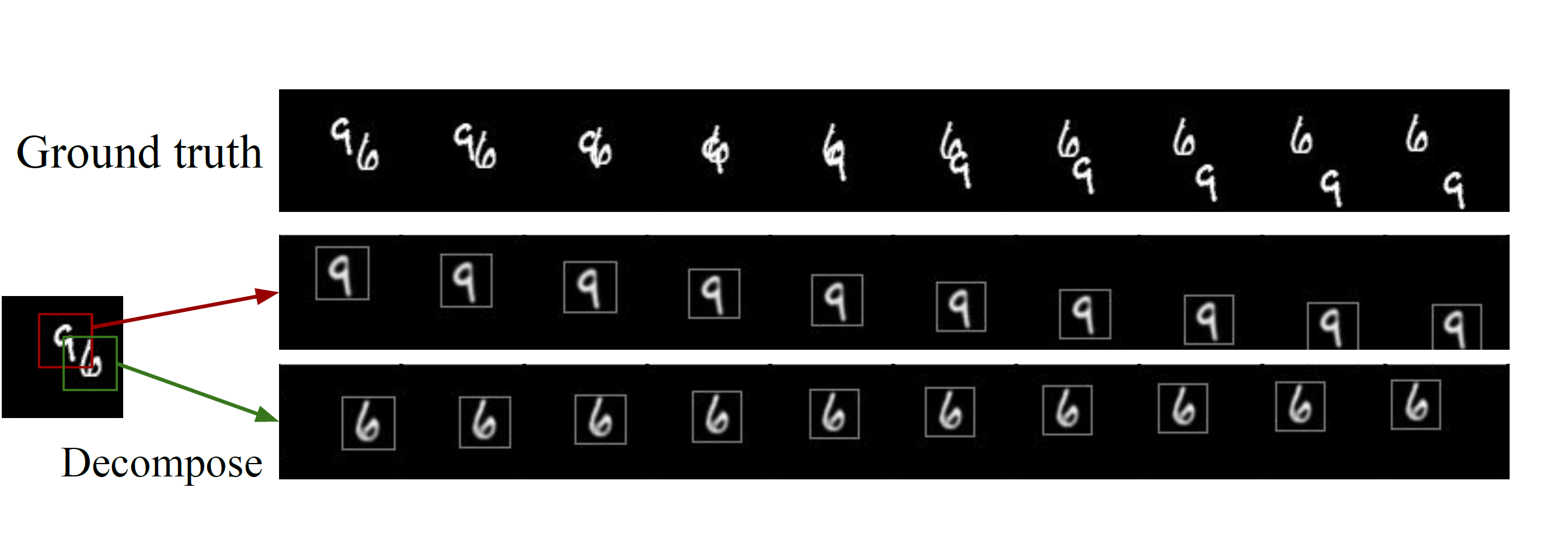This is the code for the paper
Learning to Decompose and Disentangle Representations for Video Prediction
Jun-Ting Hsieh, Bingbin Liu, De-An Huang, Li Fei-Fei, Juan Carlos Niebles
Will be presented at NeurIPS 2018.
Our goal is to predict future video frames given a sequence of input frames. Our key insight into this high-dimensional prediction problem is to decompose it into sub-problems that can be more easily predicted. To this end, we proposed the Decompositional Disentangled Predictive Auto-Encoder (DDPAE), a framework that combines structured probabilistic models and deep networks to automatically
- decompose the high-dimensional video into components, and
- disentangle each component to have low-dimensional temporal dynamics that are easier to predict.
Our DDPAE is able to learn both the latent decomposition and disentanglement without explicit supervision. We show strong results on the Moving MNIST and Bouncing Balls datasets.
Note: Our code is built with Pyro. We encourage readers to read the Pyro tutorial and AIR tutorial to better understand our code.
If you find this code useful in your research then please cite:
@inproceedings{hsieh2018learning,
title={Learning to Decompose and Disentangle Representations for Video Prediction},
author={Hsieh, Jun-Ting and Liu, Bingbin and Huang, De-An and Fei-Fei, Li and Niebles, Juan Carlos},
booktitle={NeurIPS},
year={2018}
}
All code was developed and tested on Python 3.6, PyTorch 0.3.1, and Pyro 0.2.
To view results, you need to install tensorflow and tensorbaordX.
Download the original MNIST dataset and the Moving MNIST test set by running
./datasets/moving_mnist/download.sh
We generate our Bouncing Balls dataset with the Neural Physics Engine, used by Chang et al, 2017.
First, clone the bouncing_balls submodule,
git submodule update --init --recursive
Note that this is slightly modified from the original dynamics repository.
npm must be installed. With Anaconda, install by running: conda install -c conda-forge nodejs.
Then,
cd datasets/bouncing_balls/src/js/
npm install
Generate training and testing data,
node demo/js/generate.js -e balls -n 4 -t 60 -s 50000
node demo/js/generate.js -e balls -n 4 -t 60 -s 2000
This will generate two folders, balls_n4_t60_ex50000 and balls_n4_t60_ex2000, in the datasets/bouncing_balls/data/ directory.
Move these folders to the desired location (dataset path).
Next, modify the root variable in datasets/bouncing_balls/process.py and run python datasets/bouncing_balls/process.py for both files.
Remember to set the arguments, such as ckpt_dir, ckpt_name, etc.
A tb_train directory will be created in ckpt_dir. You can see the training progress by running tensorboard --logdir ckpt_dir/tb_train.
Run
./scripts/train_mnist.sh
In our paper, we let the model train for 200k iterations. However, 50k iterations should be enough to see the model separating the two digits.
Run
./scripts/train_balls.sh
We also train for 200k iterations.
